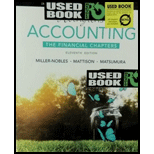
Concept Introduction:
Classes of shares:
• Shares provide partial ownership or a “share” of a corporation. There are two primary classes of shares – Equity Shares and
• Equity shares are the class of shares which carry voting rights and equity share holders are the true owners of the company as in the event of dissolution, equity shareholders get last preference in clearing the amounts invested and there is no guarantee of profits will be debited by dividend on an annual basis.
• Preference shares are the class of shares which do not carry voting rights and in the event of dissolution, preference shareholders get first preference in clearing the amounts invested and there is usually guarantee of profits will be debited by dividend on an annual basis. Convertible Preference shares are preference shares that carry the option to be converted into equity shares after certain duration.
Statement of
• An essential element of the
• When shares are issued, the par value is recorded in the Paid in capital account and if shares are issued at a price greater than the par value, they are said to be issued at a premium. This premium on issue is recorded in the Excess of Paid in Capital over Par value account.
• Retained earnings are the balance of net income for the period after deduction of operating and revenue expenses.
Journal Entries
- Journal entries are the first step in recording financial transactions and preparation of financial statements.
- These represent the impact of the financial transaction and demonstrate the effect on the accounts impacted in the form of debits and credits.
- Assets and expenses have debit balances and Liabilities and Incomes have credit balances and according to the business transaction, the accounts are appropriately debited will be credited by credited to reflect the effect of business transactions and events.
Requirement 1
To Prepare:
Record of transactions in
Requirement 2
To Prepare:
Statement of Stockholders equity
Want to see the full answer?
Check out a sample textbook solution
Chapter 13 Solutions
Horngren's Accounting, The Financial Chapters (11th Edition) - Standalone Book
- Below is information for Blue Company. Using this information, answer the following questions on the "Calculation" tab in the file. Show your work (how you got your answer) and format appropriately. Blue company has prepared the following contribution format income statement based on a sales volume of 1,000 units (the relevant range of production is 500 to 1,500 units): Sales $ 40,000 Variable expenses 24,000 Contribution margin 16,000 NOTE: Use the amounts in the original fact pattern to the left as your basis for the questions below. Fixed expenses 12,000 Net operating income $ 4,000 Questions: 1. What is the contribution margin per unit? 2. What is the contribution margin ratio? 3. What is…arrow_forwardI am looking for help with this financial accounting question using proper accounting standards.arrow_forwardGeneral accountingarrow_forward
- Please explain the correct approach for solving this general accounting question.arrow_forwardRobin Corporation has ordinary income from operations of $30,000, net long-term capital gain of $10,000, and net short-term capital loss of $15,000. What is the taxable income for 2010? a) $25,000. b) $27,000. c) $28,500. d) $30,000. e) None of the above.arrow_forwardPlease explain the solution to this financial accounting problem using the correct financial principles.arrow_forward

 AccountingAccountingISBN:9781337272094Author:WARREN, Carl S., Reeve, James M., Duchac, Jonathan E.Publisher:Cengage Learning,
AccountingAccountingISBN:9781337272094Author:WARREN, Carl S., Reeve, James M., Duchac, Jonathan E.Publisher:Cengage Learning, Accounting Information SystemsAccountingISBN:9781337619202Author:Hall, James A.Publisher:Cengage Learning,
Accounting Information SystemsAccountingISBN:9781337619202Author:Hall, James A.Publisher:Cengage Learning, Horngren's Cost Accounting: A Managerial Emphasis...AccountingISBN:9780134475585Author:Srikant M. Datar, Madhav V. RajanPublisher:PEARSON
Horngren's Cost Accounting: A Managerial Emphasis...AccountingISBN:9780134475585Author:Srikant M. Datar, Madhav V. RajanPublisher:PEARSON Intermediate AccountingAccountingISBN:9781259722660Author:J. David Spiceland, Mark W. Nelson, Wayne M ThomasPublisher:McGraw-Hill Education
Intermediate AccountingAccountingISBN:9781259722660Author:J. David Spiceland, Mark W. Nelson, Wayne M ThomasPublisher:McGraw-Hill Education Financial and Managerial AccountingAccountingISBN:9781259726705Author:John J Wild, Ken W. Shaw, Barbara Chiappetta Fundamental Accounting PrinciplesPublisher:McGraw-Hill Education
Financial and Managerial AccountingAccountingISBN:9781259726705Author:John J Wild, Ken W. Shaw, Barbara Chiappetta Fundamental Accounting PrinciplesPublisher:McGraw-Hill Education





